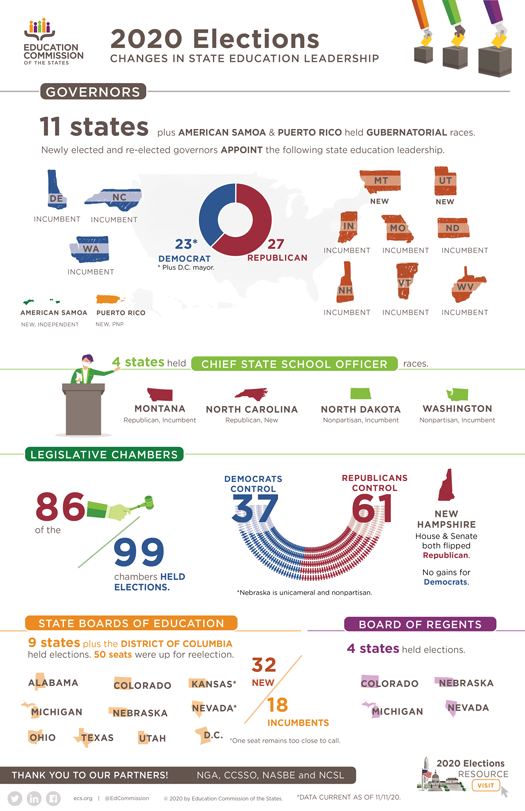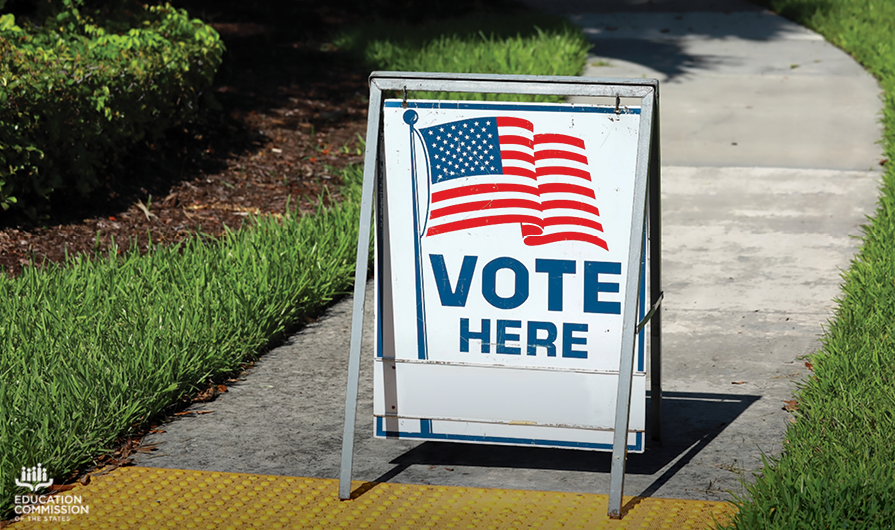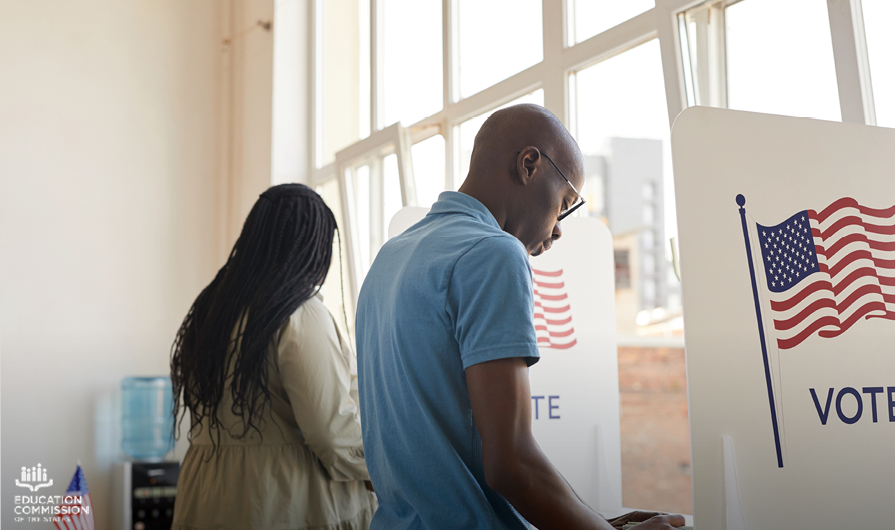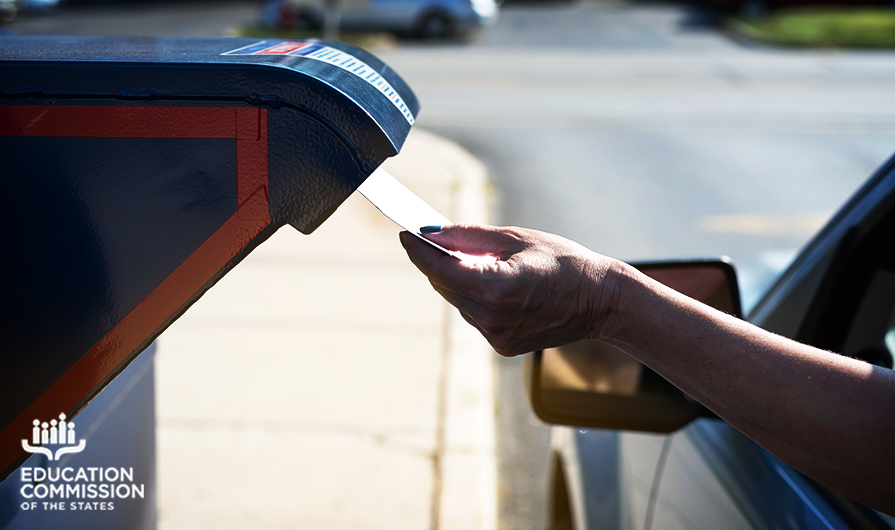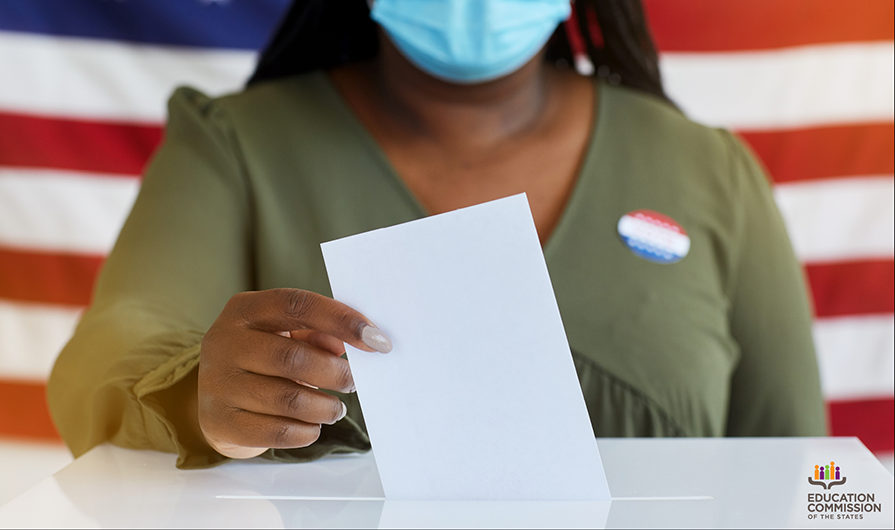In a year of historic voter turnout, voters across the country cast their ballots for important education leadership positions and on ballot measures that impacted education systems. We provide an overview of the results on our elections resource page, and here, we provide a more detailed breakdown of the results and how they could impact education going into 2021. (For more information on which states had races and ballot measures, please see our earlier post.)
Governors
Of the 11 states with gubernatorial races, two elected a new governor – Greg Gianforte became the new governor in Montana and Spencer Cox was elected governor in Utah.
This brings the partisan split to 27 Republican governors and 23 Democrat governors.
These newly elected or re-elected governors have the authority to appoint other important education leadership positions in their states:
-
-
- Four have the authority to appoint chief state school officer: Delaware, Indiana, New Hampshire and Vermont.
- Ten have the authority to appoint state board of education members: Delaware, Indiana, Missouri, Montana, New Hampshire, North Carolina, North Dakota, Vermont, Washington and West Virginia .
- One has the authority to appoint the state higher education executive: Washington.
-
State Education Chiefs
Of the four chief state school officers up for election this year, one elected a new chief state school officer – Catherine Truitt in North Carolina.
Chiefs have different authorities depending on their state’s constitution, statutes and regulations, but some of the authorities these newly elected and re-elected chiefs have include:
-
-
- Executing state policies related to education standards, teacher and leader preparation, and assessments.
- Acting as the head administrator at the state department of education.
- Developing the state's education budget.
- Serving as a liaison between education leadership in the state, including local school districts, the legislature, state board of education and the governor's office.
-
State Boards of Education
Of the 9 states plus the District of Columbia with elections for state board of education members, 32 new state board members were elected and 18 state board members were re-elected.
Some of the authorities the newly elected or re-elected board members have include:
-
-
- Adopting goals or strategic plans for the state education system.
- Determining the course of study or curriculum of a state.
- Overseeing teacher and school leader preparation and credentialing programs.
- Setting standards for accreditation and accountability of schools.
- Maintaining the administration of the state department of education.
-
Board of Regents
Four states held state or system Board of Regent races for 15 seats – Colorado, Michigan, Nebraska and Nevada. Some of the authorities the newly elected or re-elected regents have include:
-
-
- Developing and administering academic policies, programs and initiatives.
- Creating strategic plans for institutions or state higher education systems.
- Recommending or approving the establishment of new institutions.
- Overseeing student financial aid.
-
State Legislatures
This year, 86 legislative chambers in 44 states held elections for over 5,000 seats in statehouses. The results show that, in 2021, when new members are sworn in, 61 state legislative chambers will be Republican controlled and 37 state legislative chambers will be Democrat controlled. One state – Minnesota - maintained a “split” legislature this election cycle where the upper and lower chambers of the state legislature are different parties.
Some of the authorities — related to education — that the newly elected or re-elected state legislators have include:
-
-
- Creating a policy structure for public schools through legislation.
- Determining budget allocations for public schools and state education departments.
- Ensuring specific student populations, like children with disabilities, are receiving equitable and adequate services and supports.
-
Ballot Measures
Voters also considered ballot measures related to education. Unofficial results include the following measures expected to pass:
-
-
- Arizona voters approved Proposition 208 to increase public education by imposing a 3.5% surcharge on taxable annual income over $250,000 for single people or $500,000 for joint filings.
- Colorado voters approved two tax related measures that impact school funding. Amendment 77 amends the state constitution to allow gaming communities to increase maximum single bets. The tax revenue will support services related to community college student retention and credential completion. Proposition EE increases taxes on nicotine, including vaping products. The revenue will support education and early learning programs, among other things.
- New Mexico voters approved two legislative referred measures, bond measures B and C, to increase funding for higher education and library projects.
- Washington voters approved Referendum 90 requiring school districts to develop a comprehensive, age-appropriate sexual health education. The sex education requirements would be consistent with state standards and excuse students upon their parent’s request.
-
Our elections resource page has more information, including an interactive graphic of the 2020 results, a downloadable poster and an archive of past years' election coverage.


